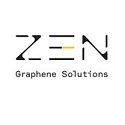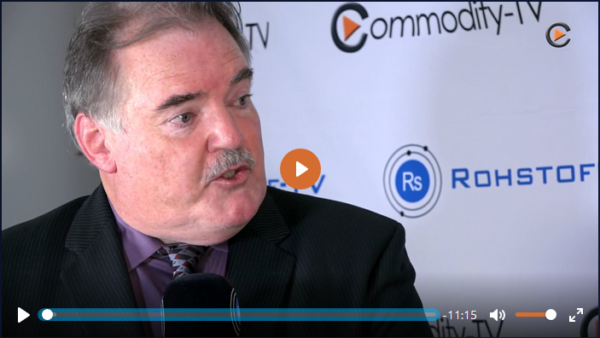- Announced that its wholly-owned subsidiary, Empower Healthcare Assets Inc., has issued a convertible promissory note in the principal amount of CAD$250,000 to Heritage
- Under the terms of the LOI, Empower and Heritage will each hold a 50% ownership interest in the JV entity.
- Heritage, via its wholly owned subsidiary, Purefarma Solutions Inc. will install extraction units and related downstream extraction equipment inside Empower’s existing 5,000 sq. ft. licenced hemp processing facility in Sandy, OR.
HERITAGE CANNABIS HOLDINGS CORP. (CSE:CANN) (“Heritage”) provides $250,000 of funding to support the development of the previously announced Empower – Heritage Extraction Center Joint Venture (the “JV”) in Sandy, OR.
VANCOUVER, BC / December 13, 2019 / EMPOWER CLINICS INC. (CSE:CBDT)(OTC:EPWCF)(Frankfurt:8EC) (“Empower” or the “Company“), a vertically integrated and growth-oriented CBD life sciences company, is pleased to announce that its wholly-owned subsidiary, Empower Healthcare Assets Inc., has issued a convertible promissory note (the “Note“) in the principal amount of CAD$250,000 to Heritage, pursuant to an initial first funding under the letter of intent (the “LOI“) previously announced by the Company on September 17, 2019.
Under the terms of the LOI, Empower and Heritage will each hold a 50% ownership interest in the JV entity (“NewCo“). Heritage, via its wholly owned subsidiary, Purefarma Solutions Inc. (“Purefarma“),
will install extraction units and related downstream extraction
equipment inside Empower’s existing 5,000 sq. ft. licenced hemp
processing facility in Sandy, OR. In addition, Purefarma will train and
supervise staff on the proprietary methods of extraction and oil
production that it utilizes in Canada. The JV will be equally funded by
both companies, with Heritage investing an initial $500,000 for start-up
funds, as the build-out completes and the JV secures high quality hemp
supply from local growers.
“Securing the initial advance from Heritage demonstrates the
confidence both companies have in being able to finalize a definitive
agreement for the formation of the JV and commence full operations at
the Sandy, OR facility,” said Steven McAuley, Empower’s Chairman and
CEO. “Receiving the advance allows us to place purchase orders for
equipment and complete 2020 state licensing requirements to begin
product production, which is expected to be followed soon after by the
set up of the hemp-derived CBD extraction equipment.”
“We at Heritage continue to be excited and optimistic about our
potential with the large U.S. markets. Having a distribution partner
like Empower and a licenced facility together are expected to allow us
to accelerate our path to new revenue and support the order pipeline we
are building,” said Clint Sharples, CEO of Heritage.
The Note bears interest at the rate of 2.0% per annum and will mature
no later than December 31, 2021. The Note contains an optional
conversion provision for Heritage to surrender the Note in exchange for
shares in the capital of Empower. The number of Empower shares to be
issued to Heritage will be based on the value of the shares at the close
of business the day before this Note is surrendered to the Company,
subject to a minimum conversion price of $â—, being the closing price of
the shares on the Canadian Securities Exchange (the “CSE“) on December â—, 2019.
A further optional conversion provision provides that, on or after
the date when a definitive agreement is executed and delivered by the
parties in connection with the JV, Heritage may surrender the Note to
the Company in exchange for an equity interest in Newco equal to
Heritage’s pro-rata cash investment in NewCo made pursuant to the Note,
provided however, that the Company shall have 60 days to match
Heritage’s contribution to NewCo, such that if the Company or an
affiliate invests an amount equal to Heritage’s investment, the equity
ownership in NewCo will be held equally by Heritage and the Company.
Upon conversion, all amounts advanced under the Note shall be deemed to
be an equity advance to NewCo for purposes of the JV.
The proceeds of the Note shall be used solely in connection with the
JV and the incorporation of Newco. The proceeds shall not be used to
repay the outstanding balance under any existing or future bank or
credit facility or similar arrangement, including any scheduled payments
of principal and interest.
The Note and any Empower shares issued thereunder will be subject to a
statutory hold period of four months and one day from the date of the
issuance of the Note under applicable Canadian securities laws, as well
as resale restrictions under applicable United States securities laws.
The issuance of the Note and any Empower shares are subject to the
approval of the CSE. Neither the Note nor any of the Empower shares that
may be issuable thereunder will be registered under the United States Securities Act of 1933,
as amended, and none may be offered or sold in the United States absent
registration or an applicable exemption from the registration
requirements. This press release shall not constitute an offer to sell
or the solicitation of an offer to buy any securities of the Company,
nor shall there be any sale of the securities in any jurisdiction in
which such offer, solicitation or sale would be unlawful.
ABOUT EMPOWER
Empower is a leading owner/operator of a network of physician-staffed
clinics focused on helping patients improve and protect their health
through innovative uses of medical cannabis. It is expected that
Empower’s proprietary product line “Sollievo” will offer patients a
variety of delivery methods of doctor recommended cannabidiol (CBD)
based product options in its clinics, online and at major retailers.
With over 165,000 patients, an expanding clinic footprint, a focus on
new technologies, including tele-medicine, and an expanded product
development strategy, Empower is undertaking new growth initiatives to
be positioned as a vertically integrated, diverse, market-leading
service provider for complex patient requirements in 2019 and beyond.
ABOUT HERITAGE CANNABIS HOLDINGS CORP.
The Company is a vertically integrated cannabis provider that
currently has two Health Canada approved licenced producers, through its
subsidiaries Voyage Cannabis Corp. and CannaCure Corp. both regulated
under the Cannabis Act Regulations. Working under these two licences,
Heritage has two additional subsidiaries, Purefarma Solutions, which
provides extraction services, and BriteLife Sciences that is focused on
cannabis based medical solutions. Heritage as the parent Company, is
focused on providing resources for its subsidiaries to advance their
products or services to compete both domestically and internationally.
ON BEHALF OF THE BOARD OF DIRECTORS:
Steven McAuley
Chief Executive Officer
CONTACTS:
Investors: Steve Low
Boom Capital Markets
[email protected]
647-620-5101
Investors: Steven McAuley
CEO
[email protected]
604-789-2146
For French inquiries: Remy Scalabrini, Maricom Inc., E: [email protected], T: (888) 585-MARI
DISCLAIMER FOR FORWARD-LOOKING STATEMENTS
This news release contains certain “forward-looking statements”
or “forward-looking information” (collectively “forward looking
statements”) within the meaning of applicable Canadian securities laws.
All statements, other than statements of historical fact, are
forward-looking statements and are based on expectations, estimates and
projections as at the date of this news release. Forward-looking statements
can frequently be identified by words such as “plans”, “continues”,
“expects”, “projects”, “intends”, “believes”, “anticipates”,
“estimates”, “may”, “will”, “potential”, “proposed” and other similar
words, or information that certain events or conditions “may” or “will”
occur. Forward-looking statements in this news release include
statements regarding: the proposed JV; the Company’s intention to open a
hemp-based CBD extraction facility; the expected use of proceeds of the
Note; the expected benefits to the Company and its shareholders as a
result of the proposed JV. Such statements are only projections, are
based on assumptions known to management at this time, and are subject
to risks and uncertainties that may cause actual results, performance or
developments to differ materially from those contained in the
forward-looking statements, including that: Heritage and Empower may be
unable to agree on terms of a definitive agreement with respect to the
JV; that the Company may not open a hemp-based CBD extraction facility;
that legislative changes may have an adverse effect on the Company’s
business and product development; that the Company may not be able to
obtain adequate financing to pursue its business plan; general business,
economic, competitive, political and social uncertainties; failure to
obtain any necessary approvals in connection with the proposed JV or
extraction facility; and other factors beyond the Company’s control. No
assurance can be given that any of the events anticipated by the
forward-looking statements will occur or, if they do occur, what
benefits the Company will obtain from them. Readers are cautioned not to
place undue reliance on the forward-looking statements in this release,
which are qualified in their entirety by these cautionary statements.
The Company is under no obligation, and expressly disclaims any
intention or obligation, to update or revise any forward-looking
statements in this release, whether as a result of new information,
future events or otherwise, except as expressly required by applicable
securities laws.















